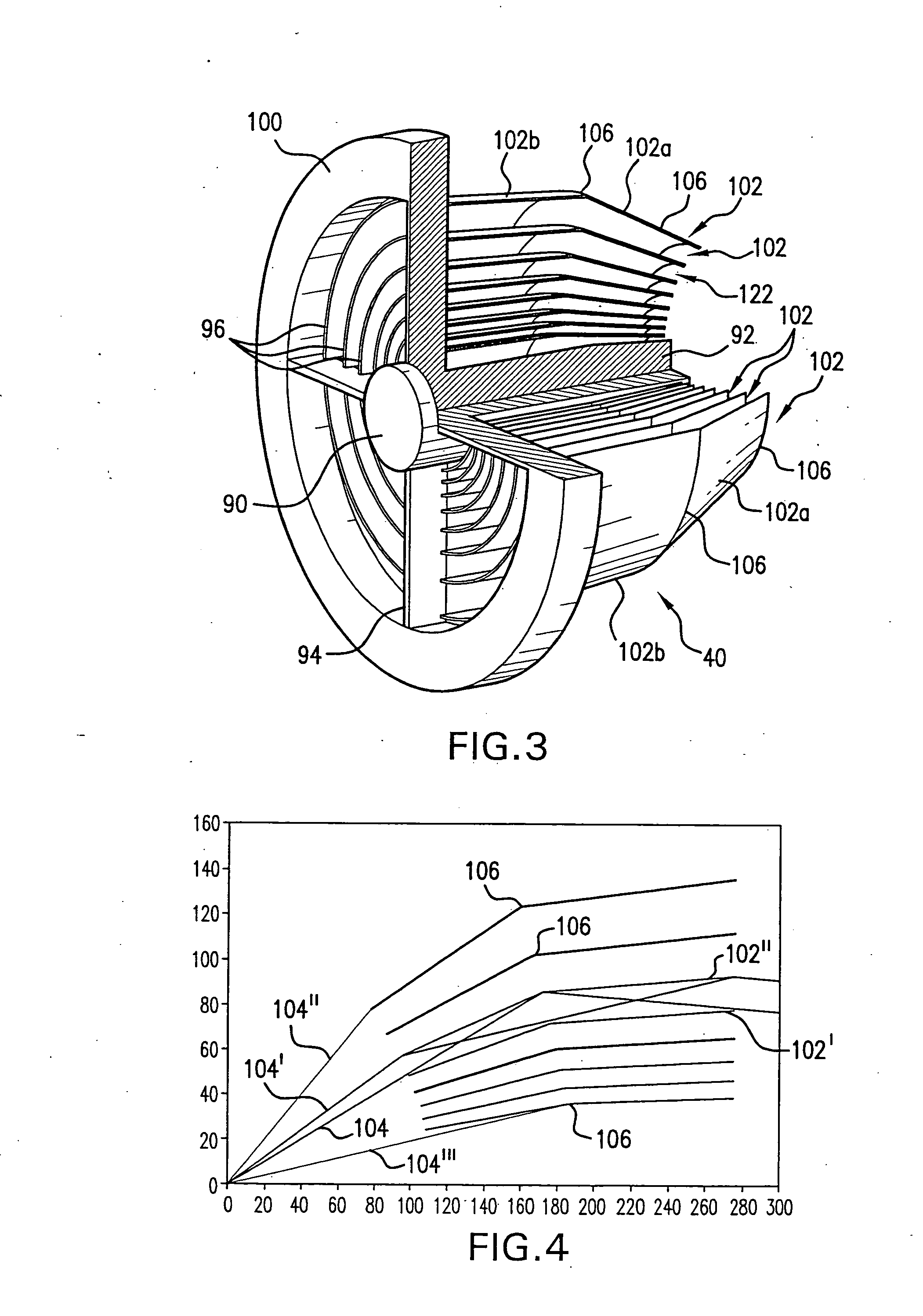Discharge produced plasma EUV light source
a plasma euv light source and discharge-produced technology, applied in the field of euv and softxray light sources, can solve the problems of high thermal load on components, electrode lifetime is another euv light source issue that needs attention, and several detrimental effects on performance and component li
- Summary
- Abstract
- Description
- Claims
- Application Information
AI Technical Summary
Benefits of technology
Problems solved by technology
Method used
Image
Examples
Embodiment Construction
[0033] Turning now to FIG. 1 there is shown a discharge produced plasma (“DPP”) EUV and soft-x-ray light source 20 according to an embodiment of the present invention. The EUV light source may include, e.g., a housing 22, defining a discharge chamber 24. Attached, e.g., through a sealed opening in one wall of the chamber 22 may be, e.g., a pair of electrodes 26, which may include, e.g., generally cylindrical electrodes including, e.g., an outer electrode 28, which may be, e.g., the cathode, and an inner electrode 30, which may be, e.g., an anode or vice-versa, but for purposes of this disclosure the former designations will be used. The inner electrode 30 may be insulated from the outer electrode 28, e.g., by an insulator 70 as shown in FIG. 2, and together, when supplied by a very high voltage and with a very fast rise time pulse of electrical energy, e.g., from a solid state pulse power module 139, shown in FIG. 7, produce a discharge between the electrodes 28, 30, e.g., through a...
PUM
 Login to View More
Login to View More Abstract
Description
Claims
Application Information
 Login to View More
Login to View More - R&D
- Intellectual Property
- Life Sciences
- Materials
- Tech Scout
- Unparalleled Data Quality
- Higher Quality Content
- 60% Fewer Hallucinations
Browse by: Latest US Patents, China's latest patents, Technical Efficacy Thesaurus, Application Domain, Technology Topic, Popular Technical Reports.
© 2025 PatSnap. All rights reserved.Legal|Privacy policy|Modern Slavery Act Transparency Statement|Sitemap|About US| Contact US: help@patsnap.com



